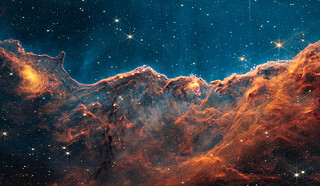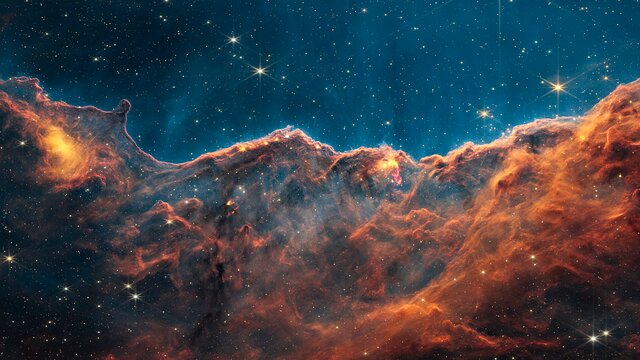Infrared Astronomy
Infrared astronomy refers to an area of astronomy where astronomers observe and analyse light from the Universe that falls within the infared wavelength range.
Astronomers analyse light (electromagnetic radiation) in order to study the Universe. Telescopes collect light, and the data collected by telescopes allows astronomers to learn about specific celestial objects, and to develop better theories about the past, present and future of the Universe. The nature of the light that an object emits depends on its temperature. Whereas hot stars predominantly emit visible light, infrared radiation is emitted by slightly cooler objects, such as exoplanets and cool clouds of cosmic dust. Furthermore, infrared radiation passes more freely through cosmic dust than visible light (which is scattered by the dust) does, meaning that infrared astronomy allows astronomers to observe regions of space that are otherwise obscured by cosmic dust. This means that images taken in the infrared also typically reveal more stars than images taken in visible light (since stars emit infrared as well as visible light). By combining observations at different wavelengths, we can develop a more complete picture of the structure, composition and behaviour of celestial objects than the visible wavelengths alone could ever show.
Webb is built for observing at infrared wavelengths. It has four instruments — MIRI, which works at mid-infrared wavelengths, and NIRSpec, NIRCam and NIRISS, which all operate in the near-infrared — that enable it to collect high-quality images and spectra. Its primary science goals include the study of exoplanets, stars, galaxies and the early Universe.




